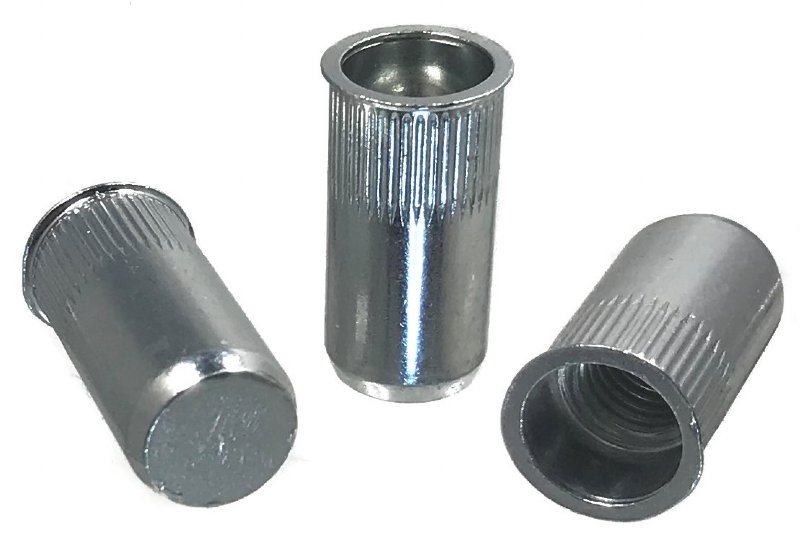

Grind to final shape if needed with the hand-held belt sander and then hit it hard with the knotted wire wheel in the 4" angle grinder. Little to no filler rod was required on all but the one I started grinding on. My original plan was to just cut off the excess bolt and shape the nut with the hand-held belt sander, but realized that I wouldn't be leaving much "nut" behind after getting it ground to rivet shape, so I contoured it with the blue-tipped hot wrench instead. At first I thought I'd strip or break the bolt, but it didn't happen. Using the remaining hex for "traction" I installed the modified carraige bolts (some "squaring of the hole may be necessary) with the rounded part of the nut against the work and tightend it until the hex slipped in the 12-point wrench. Running the drill backwards again against the disc sander/grinder I carefully ground half the nut to round, leaving the other half hex. I chucked up a short piece of 3/8" threaded rod in the hand-held drill gun and double nutted two nuts on the end. In the past I've gotten these nearly white hot and using a shop-built buck bar (re-shape a drill bit to the rivet head size/shape and drill into the bar to form the cavity) installed the same way as an original rivet, but this last time I tried a different method. A good beating with the bench grinder wire wheel (still chucked up and running backwards) takes out the grinding marks.

Run the drill backwards against the running disc sander until the outer diameter is the correct size and then contour the head to "rivet shape". Not a great picture, from the floor looking up, but here's an example on the rear crossmember Īnother way is to take a carriage bolt of the right diameter and chuck it up in your drill. If necessary, a little touch up work with the hand-held belt sander followed by the knotted wire wheel makes it look real. One method, especially if the top of the rivet was cut/ground/torched off and the hard to get at side is still in the hole, is to simply use a torch and coat hanger (OK, you could actually buy those nice copper coated welding rods of you feel that way about it) and, after plug welding through the hole onto the base metal to connect the two parts, "make" a rivet head shaped blob out of filler rod. I knew I should have taken pictures when I did both methods two weeks ago. I feel that what ever I do in this regard is less strong than the original rivets so I only use it where the rivets are augmented by welds, even if I have to put the welds there myself (in somewhat hidden areas if possible). I'll give it a good test drive to make sure it holds and then rivet the home made panel back into place.I've done it a couple of different ways. Here she is all bolted back together again. If not I'll just have to pull that part of the floor back up again. Hopefully if I ever have to pull the mount the JB will keep the bolt in place and I won't have to dig into my trunk again. I decided to mount them with the bolt part facing downwards and put a bit of JB weld on the head of the bolt. I went to NAPA and got a couple grade 10.9 bolts and nuts with flanged ends. The plate the capture nut was welded to seems to still be in good shape so I decided to just bolt the mount back into the current metal.

The damage seemed localized to to the captured nut so I vacuumed out the rail and hit up the top and bottom with some rust reform. I figured rust was the main culprit it got into the trunk and ate the floor away and then into the chassis rail. So I cut an access point into some of the remaining trunk floor. I pulled off the home made plate to reveal that I do in fact have access to the top of where the mount bolts to if I remove the floor. All better now it wasn't as hard as I had feared.


 0 kommentar(er)
0 kommentar(er)
